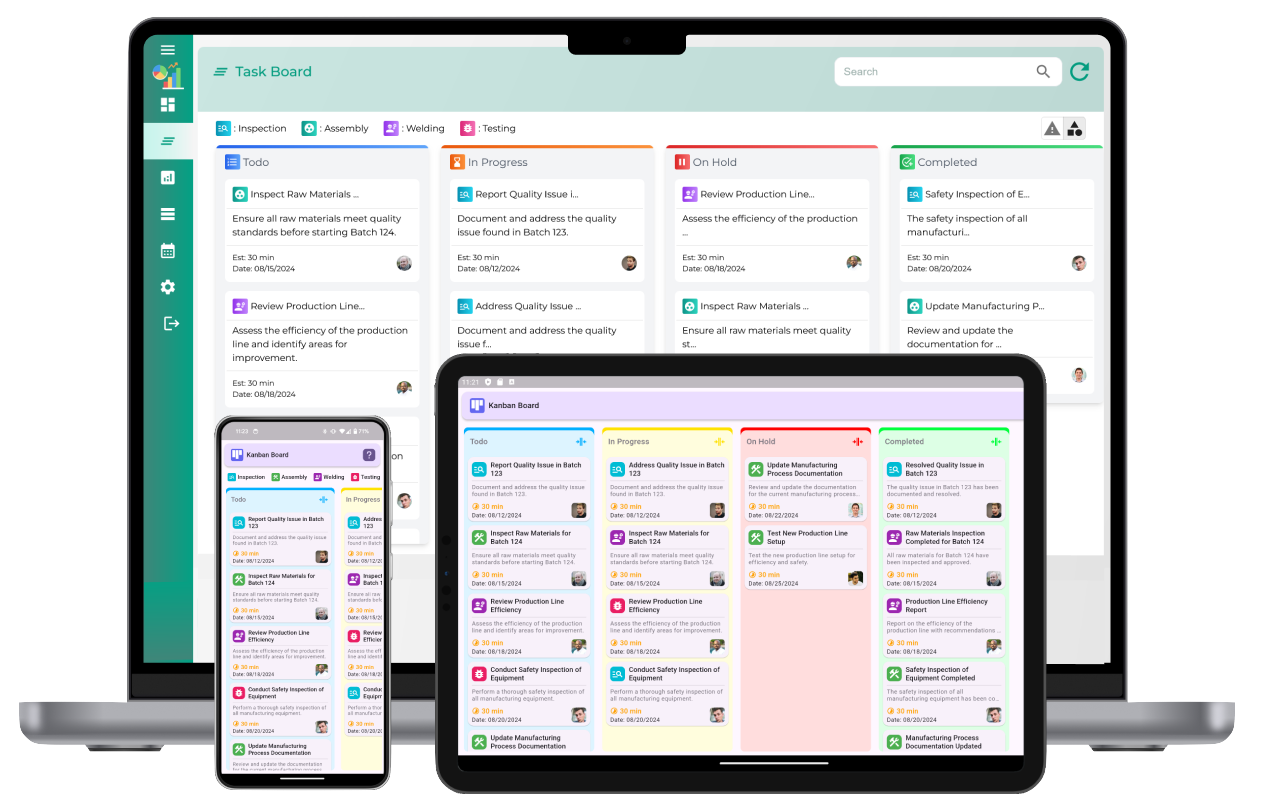As the manufacturing industry advances toward Industry 5.0, digital workflows are playing a crucial role in enhancing efficiency, collaboration, and automation. Unlike traditional paper-based processes, digital workflows streamline operations, reduce errors, and enable real-time decision-making, leading to improved productivity and innovation.

1. Understanding Digital Workflows in Manufacturing
Digital workflows refer to the integration of automated systems, cloud-based solutions, and real-time data analytics to manage and optimize manufacturing operations. These workflows replace manual processes with intelligent automation, ensuring seamless communication between machines, employees, and business systems.
2. Benefits of Digital Workflows in Industry 5.0
- Enhanced Productivity: Automation reduces manual intervention, allowing employees to focus on high-value tasks.
- Improved Accuracy: Digital workflows eliminate human errors in data entry, task assignments, and reporting.
- Real-Time Data Access: Cloud-based systems provide instant updates on production status, inventory levels, and order processing.
- Better Collaboration: Teams can work together efficiently, regardless of location, using integrated platforms.
- Reduced Downtime: Predictive maintenance and automated alerts help prevent unexpected equipment failures.
- Increased Customization: Industry 5.0 promotes personalized manufacturing, and digital workflows facilitate tailored production runs.
3. How to Implement Digital Workflows in Manufacturing
Step 1: Assess Current Workflow Processes
Analyze existing workflows to identify bottlenecks, inefficiencies, and areas where automation can add value.
Step 2: Choose the Right Digital Tools
Select cloud-based platforms, IoT-enabled devices, and AI-powered systems that align with manufacturing goals.
Step 3: Automate Repetitive Tasks
Use robotic process automation (RPA) and AI-driven solutions to streamline tasks such as inventory management, quality control, and order processing.
Step 4: Integrate Systems for Seamless Operations
Ensure that digital Workflows connect with ERP, MES, and other business systems for real-time data sharing.
Step 5: Train Employees for Digital Adoption
Provide training programs to help employees adapt to new digital tools and workflows.
4. The Future of Digital Workflows in Industry 5.0
As Industry 5.0 focuses on human-machine collaboration, digital workflows will continue to evolve with AI, IoT, and big data analytics. These advancements will further optimize production processes, enhance customization, and improve sustainability in manufacturing.
By embracing digital workflows, manufacturers can achieve greater efficiency, innovation, and adaptability in the ever-changing industrial landscape.
How Do Digital Workflows Help Manufacturers - Industry 5.0
What is Industry 5.0?
Industry 5.0 focuses on the collaboration between humans and machines, enhancing efficiency while emphasizing sustainability, customization, and human-centric manufacturing.
How do digital workflows support Industry 5.0?
Digital workflows streamline processes, improve communication, and enable seamless integration between human workers, automation, and AI-driven technologies.
What are the key benefits of digital workflows in manufacturing?
They reduce manual errors, enhance productivity, support real-time monitoring, and improve decision-making through data-driven insights.
How do digital workflows improve human-machine collaboration?
By integrating smart automation tools, AI-powered insights, and real-time tracking, digital workflows help workers and machines operate more efficiently together.
What role does AI play in digital workflows for Industry 5.0?
AI optimizes workflows by analyzing data, predicting equipment failures, automating repetitive tasks, and enhancing decision-making.
How does automation enhance digital workflows?
Automation speeds up processes, eliminates redundant tasks, and ensures consistency in production, improving overall operational efficiency.
What impact do digital workflows have on production efficiency?
They minimize downtime, optimize resource utilization, and enable faster response times to production issues.
How do digital workflows support sustainability in manufacturing?
By optimizing resource use, reducing waste, and tracking energy consumption, digital workflows contribute to sustainable manufacturing practices.
Can digital workflows help manufacturers reduce costs?
Yes, by improving efficiency, reducing waste, automating tasks, and preventing costly errors, digital workflows help lower operational expenses.
How do real-time data and analytics enhance digital workflows?
They provide immediate insights into production performance, help predict maintenance needs, and improve overall decision-making.
How do digital workflows improve decision-making in manufacturing?
By providing accurate, real-time data, digital workflows help manufacturers make informed decisions quickly and efficiently.
What challenges do manufacturers face when implementing digital workflows?
Challenges include high initial costs, integration with legacy systems, employee resistance to change, and cybersecurity concerns.
How does digital workflow integration improve supply chain management?
By providing real-time visibility, enhancing coordination, and reducing delays, digital workflows optimize supply chain operations.
What security measures are needed for digital workflows?
Secure access controls, encryption, regular audits, and cybersecurity training are essential to protect digital workflows from threats.
How can manufacturers transition to digital workflows effectively?
By adopting a phased approach, providing employee training, ensuring system compatibility, and leveraging data analytics for continuous improvement.